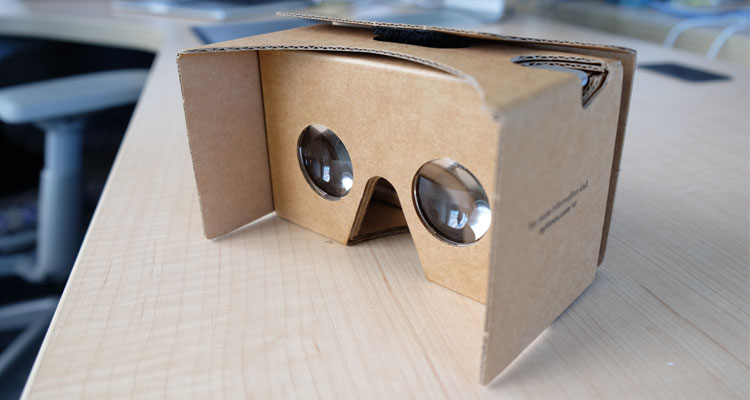This past Sunday, I received a free Google Cardboard virtual reality headset with my Sunday delivery of The New York Times.
The Times touted it as their first venture into creating a virtual reality news “experience.” To paraphrase them: The Times has always brought its readers the world. Now it’s bringing the world to its readers.
In other words, because of the immersive, 360 degree nature of virtual reality, it creates a “you are there” experience unlike any other.
I have to agree. The November 8 issue of The New York Times Magazine featured a powerful set of stories called “The Displaced” about three children tragically affected by the wars in Syria, Ukraine, and South Sudan. Its virtual realty video is meant to add more personal immediacy to the text-based stories.
A few notes on how it works:
- The simple Google Cardboard viewer was easy to unpack and slip my iPhone into its holder.
- I had to download a special “NYT VR” app to my phone, which I did without any problems.
- Then, I had to download the actual 10-minute film; the first time, it hung up during the download. So I shut down the app and tried it again; this time, it downloaded without a glitch.
- With headphones plugged into the iPhone, which was nestled within the Cardboard viewer, I was quickly mesmerized by the experience.
A virtual reality experience is not something in which you sit passively and stare straight ahead to watch. Instead, it’s better to be on your feet, turning in any direction to follow action that takes place all around you. You can also look up and down. By the way, when people in the video speak in their own languages, sub-titles are shown roughly every 90 degrees, so you can easily catch what’s being said.
What’s most remarkable is that with the images and the headphone audio creating a 360 degree experience, plus the ability to look left and right and turn around, you truly feel as though you are in a field of cucumbers with a 12-year old Syrian girl living in Lebanon; or in a bombed-out school with a Ukrainian boy; or in a reedy boat floating through marshes with a South Sudanese child.
The Times/Google Cardboard’s virtual experience is a great learning tool. By putting the “reader” in the midst of the global refugee crisis, the app may spark interest in a child who might not feel connected to international events. By experiencing it virtually, a student will gain an entirely new perspective on a subject that may have previously been seen as remote or uninteresting.
Clearly, virtual reality reporting is a new departure for journalism, as it will be for gaming, education, and other fields. It’s here, it’s impressive and, while it’s called virtual, let’s face it, it’s as close to actual as one can get! Stay tuned for more about virtual reality from Learning Liftoff.




































